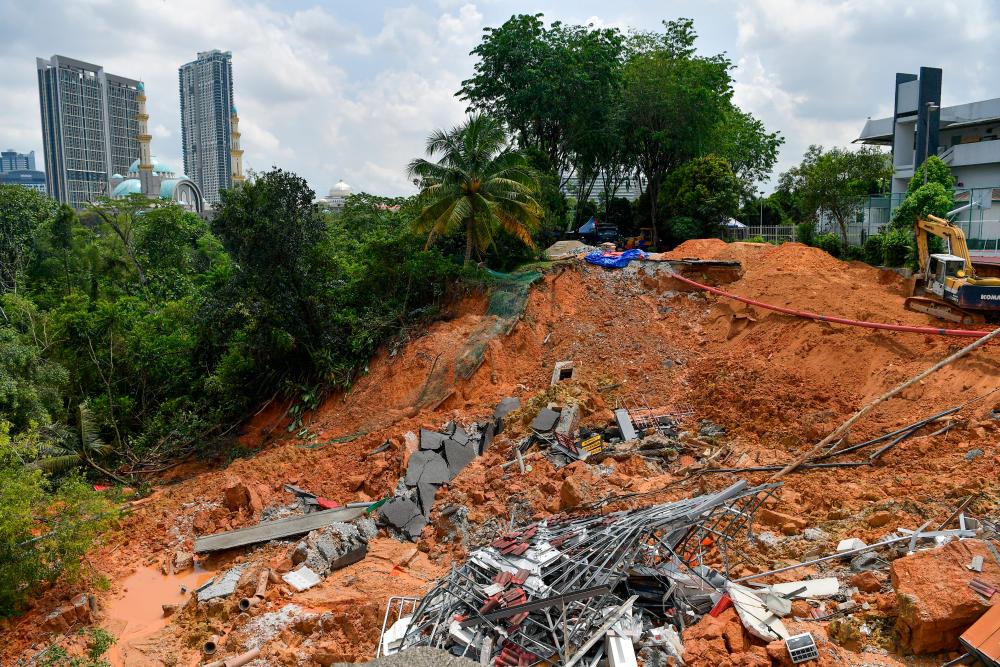PUTRAJAYA: The Ministry of Natural Resources and Environmental Sustainability (NRES) will do a comprehensive study on installing an early warning system (EWS) such as rain gauges in areas identified as highly susceptible to landslides.
The ministry said in a statement today that the system is expected to be installed in seven selected areas by the end of this year.
“NRES is committed to conducting research activities and using the latest high technology in identifying and monitoring geological disaster hotspots,” the statement said.
According to NRES, the Department of Mineral and Geoscience Malaysia (JMG) will regularly expand and update related maps through the Slope Hazard and Risk Map Production Project (PBRC) in channelling information about potential landslide hazard areas to stakeholders.
The ministry is also ready to work with local authorities (PBT) and technical agencies to extend community-based disaster risk management programmes to residents to increase awareness and preparedness on the dangers of landslides.
Meanwhile, regarding the Jan 26 landslide at Batu 59, Blue Valley, Cameron Highlands, Pahang, it said JMG’s initial investigation showed that the incident was due to continuous rain.
The NRES said the rain started at 3 pm on Jan 24 with daily cumulative rainfall reaching 126 mm on Jan 25, causing the high steep natural slopes based on granite rocks (more than 35 degrees) to collapse.
“To avoid the risk of landslide geological disasters, NRES through JMG recommends that local authorities take into account PBRC’s input (slope risk map) in development planning and the regulation of sustainable agricultural activities on slopes,” according to the statement.
In the Jan 26 landslide, five Myanmar nationals, including a woman who was a vegetable farm worker, were buried alive after their house was hit in the collapse. -Bernama









